The second part of my Greek journey was also with my friend
Rodrigo and involved sailing to three of the Cycladic islands – Mykonos, Naxos,
and Santorini – over a ten-day period.
Greece is surrounded by islands which are grouped into numerous chains –
Cyclades, Dodecanese, Northern Aegean, Saronic Gulf, Ionic, Crete, among
others. The Cyclades are the chain of
islands in the central Aegean to the south and southeast of Athens. With Mykonos and Santorini among them, they
are probably the best known of the Greek islands, at least to Americans. It may be somewhat less the case for
Europeans who tend to do beach vacations on many other islands with which
Americans are less familiar. And true to
that view, the Cyclades along with Athens were probably the place I’ve traveled
in Europe that seemed to be most dominated by American tourists. Gringos everywhere! What is this, Cabo San Lucas or something?
There are two different ferry routes from the Athens area to
Mykonos, but I had booked us ahead of time on the slow boat, the Blue Star
Line, from Pireaus.
Like Rome, Athens is
not really a seaside city, with its center around the Acropolis a few miles
from the coast. The metro area has grown toward the coast, though, and engulfed
the port at Pireaus. I initially planned
to take the metro from central Athens to the port, but decided on a faster taxi
for us when I learned it only cost 18 Euros.
And the benefit was it dropped us off right at our ship rather than us
having to find the right one in a port full of big ferry boats just after dawn.
The ship was surprisingly big to be going to a few small
islands, and booking ahead of time was far from necessary on a not very full
big ship in May. The slow boat gave us nearly six hours to watch the mainland
and then some of the Greek Isles go by.
Pireaus is quite a big port with big cruise ships as well as ferries
near its inner part and vast industrial facilities sprawling along the harbor
and shoreline farther out.
We both took a bit of a snooze after leaving port and then
found ourselves an hour later passing the nearly barren-looking mountainous islands
of Kos, Kythnos, and Glaros.
The first port of call along the way was Ermoupoli
on Syros, the capital of the Cyclades and the biggest city in the island chain
with a population of 12,000 in town and 22,000 on the island. That may be fact, but it would seem like a
lot more people than that when we got to Santorini six days later. It would
have been tempting to get off and stay for a day to explore the colorful and interesting-looking
small city that sprawls up the steep hillsides from the harbor, the hills
topped with impressive looking churches. However, Syros is not an island I’ve
heard of as being a tourist destination – maybe no sandy beaches to lie on and
fry on.
The next port of call was Tinos town on the island of Tinos. My tour guide intel tells me Tinos is a
potentially interested place to explore for a day or two as well, and that a
daily bus trip of the island’s sites is offered from the port. Maybe I’ll come back some day to explore more
of Greece’s islands, including the Cycladic ones I’ll miss this time around.
The Cyclades are all in view of one another, at least on a
clear day, so Mykonos was in view from both Syros and Tinos. While not exactly flat, Mykonos is less
mountainous than the other islands in the chain. Arriving on an island by ferry is somehow
more exciting and romantic than doing so by plane. The ferries nowadays arrive
at the new port about a mile or two north of the town center. There were taxi
drivers offering their services for a ride to town for 25 or 30 Euros, but I
decided we’d take the water bus for only 2 Euros per person and a beautiful view
entering the old harbor of the Chora (old town).

 Ermoupoli, Greece
Ermoupoli, Greece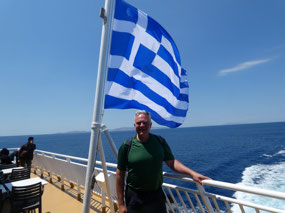
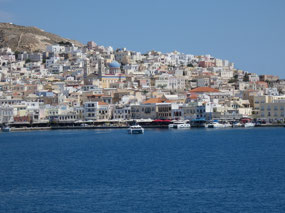
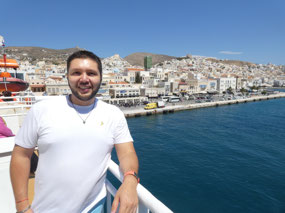




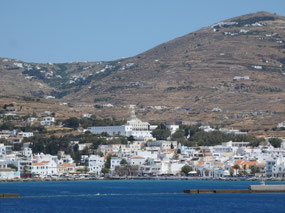

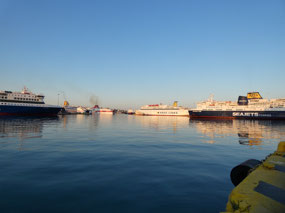

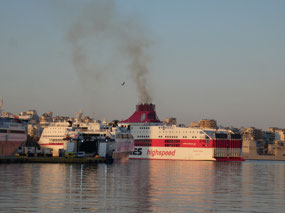
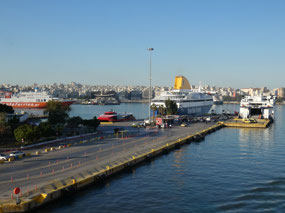
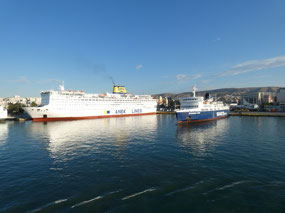
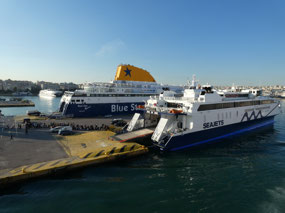
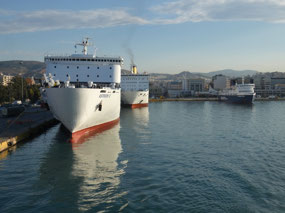
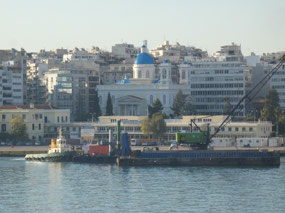
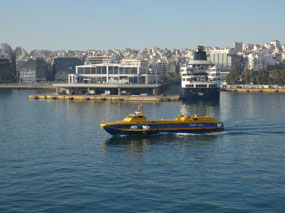
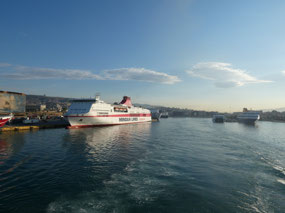
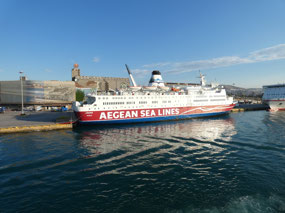

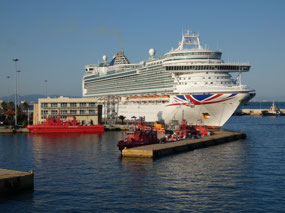
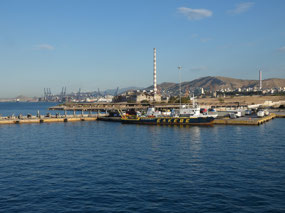
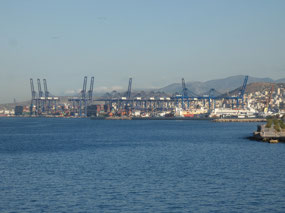
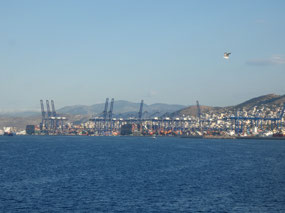

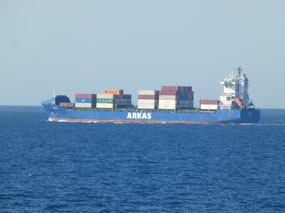
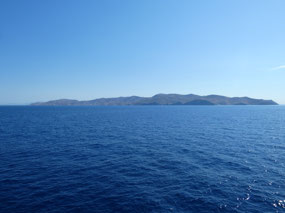
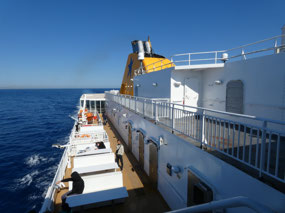

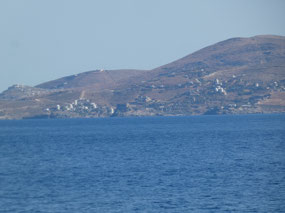
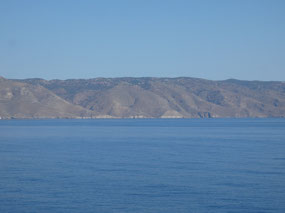
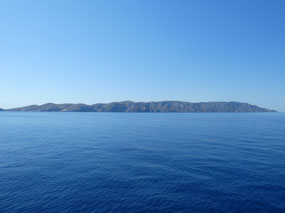
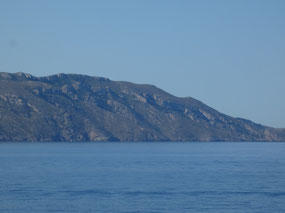
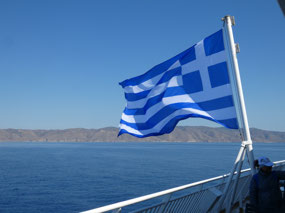
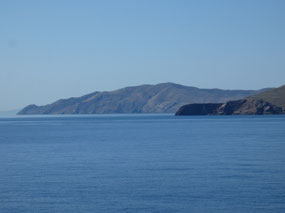
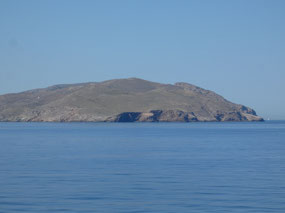
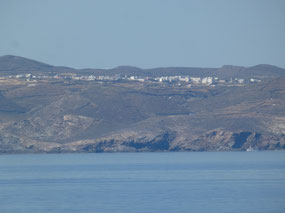
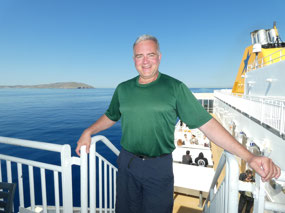
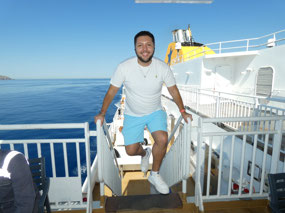
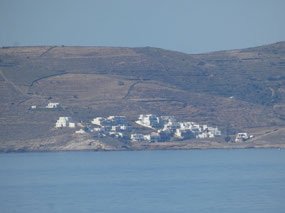
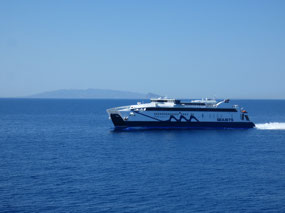
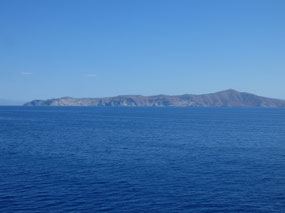

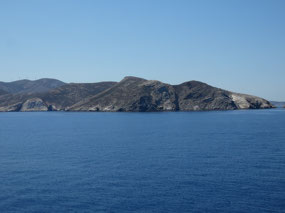
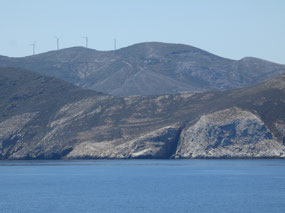
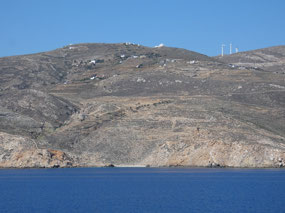
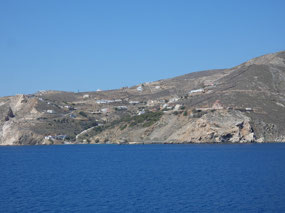
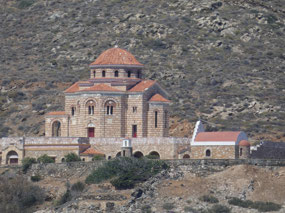
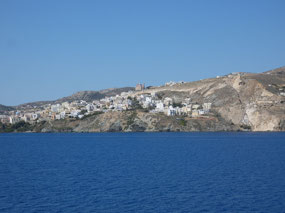
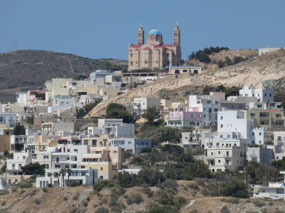
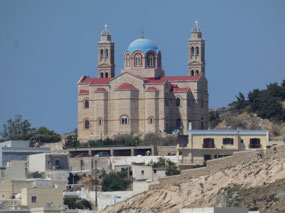
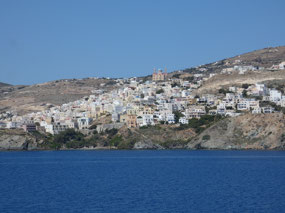
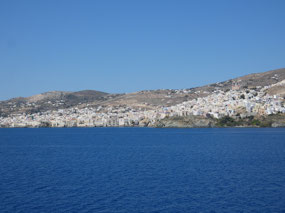
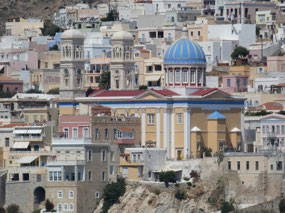
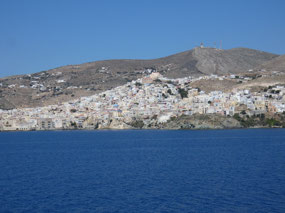
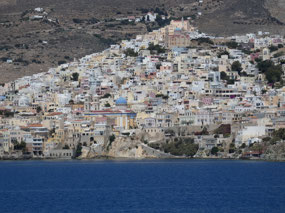

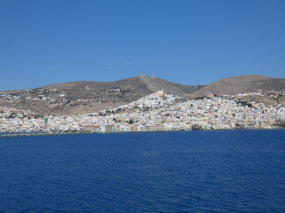
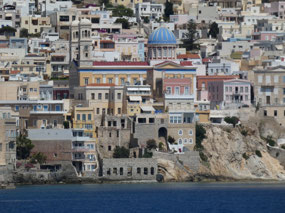
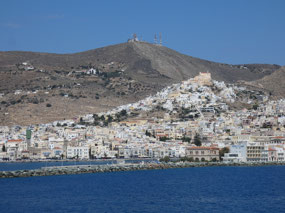
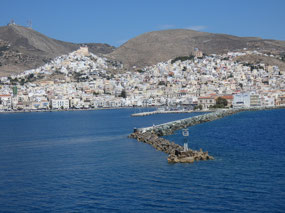

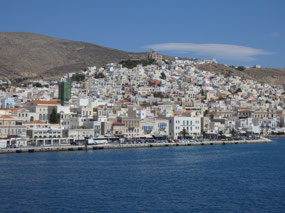
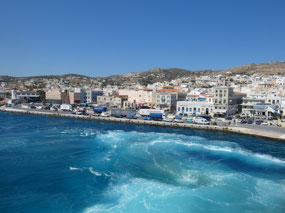
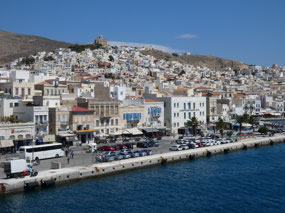
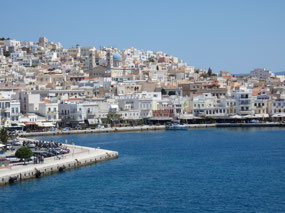

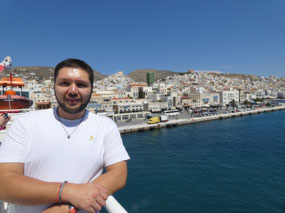
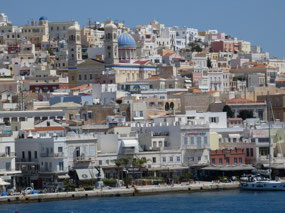
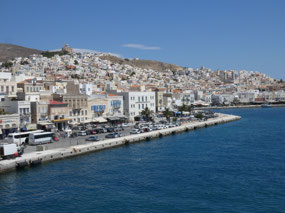
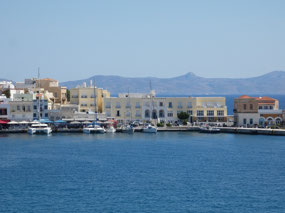

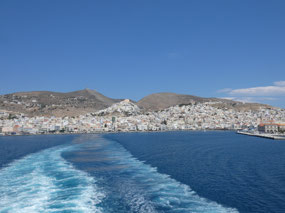
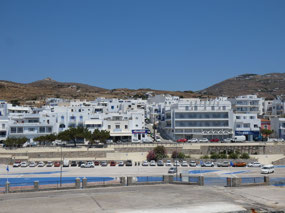
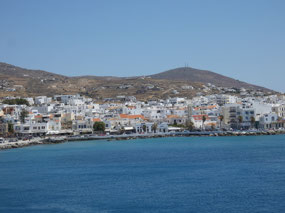
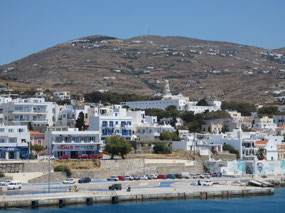
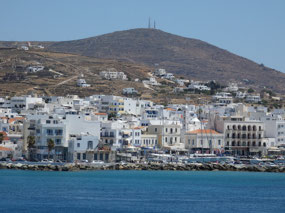
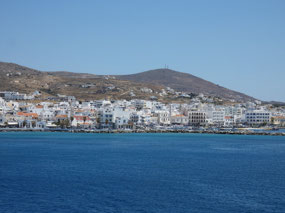
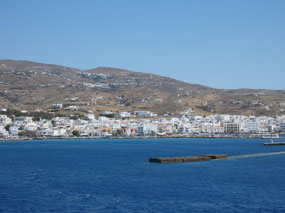
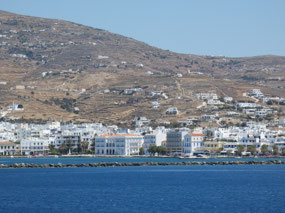
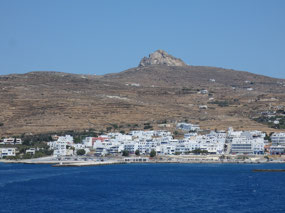
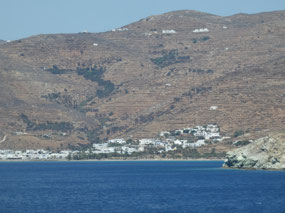
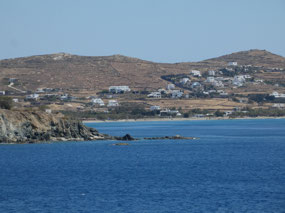

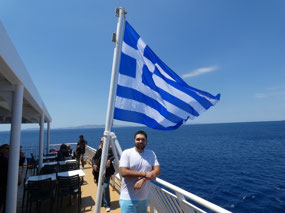
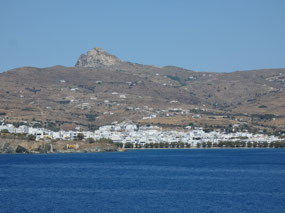
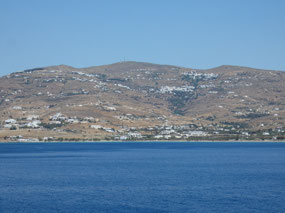
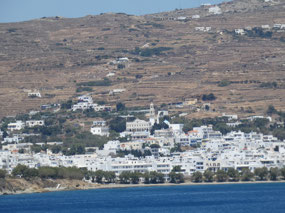
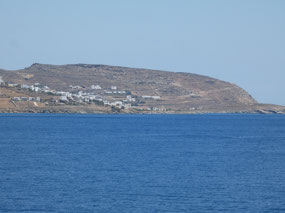
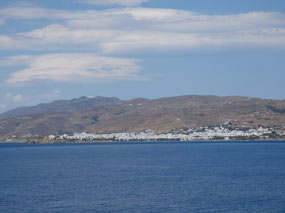
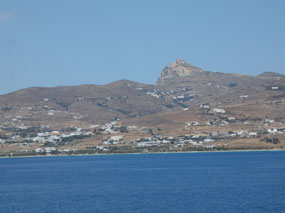
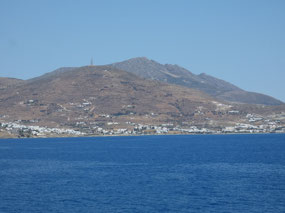
2025-05-23